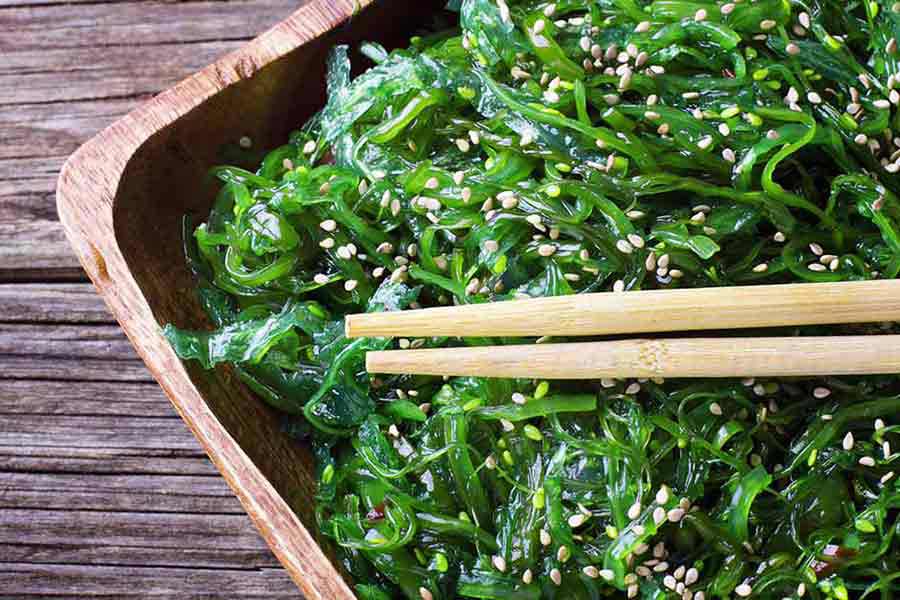I receive many requests for sea vegetable recipes and just as many questions asking me to explain the health benefits and how often to use them. My answer is, “little but often.”
I use a small amount of sea vegetables daily because I know that the mineral-rich content of seaweed creates strong blood. That blood creates my cells, these cells create my tissue, my tissue creates my organs, and, “Presto!” I have a strong body with great vitality and have the energy of someone half my age. What’s not to love about that?
Varying your sea vegetables, just like those from land, will give you the full spectrum of what they have to offer. Having miso soup daily is the perfect start to incorporating sea vegetables into your diet. The delicious stock made with kombu or wakame delivers a power-packed, nutritional punch.
Sea vegetables come in many varieties, and they all offer something special to our health. Calcium-rich hijiki and arame, antioxidant-rich wakame/kombu/kelp, potassium-rich dulse, and magnesium-rich nori are the most commonly used and easily found sea plants.
Nori
Used in sushi – is rich in iron, potassium, magnesium, vitamin A, C, B2, and of course, iodine. Nori has the highest protein content, 48% of its dry weight, and is the most easily digested of the seaweeds, rich in vitamins A, B1, and niacin. It decreases cholesterol, high blood pressure, fatty cysts under the skin, and warts. Nori also aids in digestion, especially with fried foods.
Wakame
Another seaweed you might have encountered since it is most commonly used in miso soup (commonly served in Japanese restaurants). Wakame is high in B vitamins and essential fatty acids, which means it’s very good for your skin. This incredible sea vegetable has an inhibitor of the substance that breaks down the collagen, so this food helps keep the collagen strong. Silky in texture and rich in Vitamin A, calcium, minerals, and fiber, wakame is an amazingly healthy food. It also lowers cholesterol and blood pressure.


